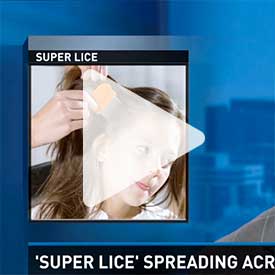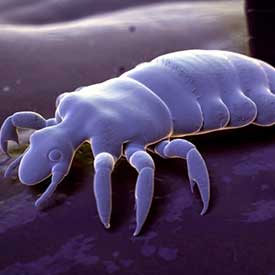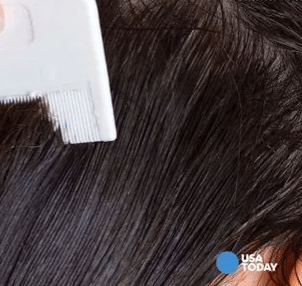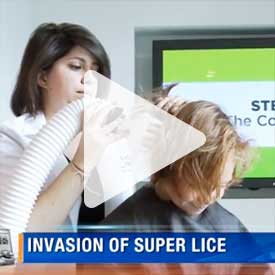In the News
head lice make headlines
This section includes news articles that have been published about Lice Clinics of America locally and nationally.
As students head back to school, head lice can be a challenge as some believe a surge correlate’s with the school year.
Lacey Leonardi spoke to a lice expert to clear up misconceptions about lice and offer some prevention help.
BUFFALO, N.Y. — Caitlin Taylor is a school social worker, and though she only sees students one on one or in small groups, she’s still concerned about getting head lice.
“I’m honestly very terrified of it at this point,” said Taylor.
What You Need To Know
- The number of head lice cases is on the rise in schools
- Schools are not required to send kids home if they have lice
- Lice clinic leaders say they are very busy and hace seen an uptick
And while she hasn’t had it at her school, she did get it several times while working as a teacher in another district.
She says it was so bad, and costly to remove, she quit.
“It became very overwhelming,” said Taylor. “It was a vicious cycle. I was sending children down to the nurse [and] the nurse was sending them back up.”
Students are not required to be sent home if a school finds it in a student’s head, as state education leaders recommend districts develop local policies and procedures, with help from the state Center for School Health.
In Jamestown, for instance, school leaders say they do notify the parents of a student with lice, who can then pick up their child if they want and get it treated. Otherwise, the student stays in school, running the risk of their classmates getting it, forcing their parents to pay for treatment.
“So we’re kind of in the middle of trying to do what’s best for the child in terms of treatment of lice and also not disrupt, or distract the classroom too much and try to keep them in school as much as possible,” said Dr. Jill Muntz, health services coordinator, Jamestown Public Schools.
This is why Taylor gets checked at Naughty Nits, a lice clinic with offices across Upstate New York.
Owner Marnie Murray says the number of people with head lice has climbed to pre-COVID levels, including in schools.
“It’s frustrating that the bug infestations are going up while the information and the support are going down,” said Murray. “There’s already so much school that’s been missed due to COVID, so in that regard, I understand the policy but it does create a lot of stress for parents.”
The clinic works with schools and nurses to provide the most recent information, send out alerts to families, and outline treatment options to help clients like Taylor impacted by the exposure.
“It does affect families emotionally, mentally, financially, and obviously physically,” said Taylor. “It’s very important to be taken care of.”
After a clean bill of health, Taylor’s relieved when back in school.
“It’s more of a piece of mind knowing that I am taking as many precautions and steps that I can to stay safe and keep my family safe,” she said.
As for the cost, the owner of Naughty Nits says when it comes to treating lice, over-the-counter products are not as effective and offer prevention programs that are ultimately cheaper in the long run than trying to remove the eggs and live bugs at home.
Celebrate WNY: Naughty Nits
WGRZ Channel 2 News
April 6, 2017
BUFFALO, N.Y. — Head lice is a condition that doesn’t get a lot of attention, as most people who have it don’t want to talk about it.
While cases took a little bit of a dip during the COVID-19 pandemic as people were in isolation, the condition is crawling its way back onto the heads of thousands of children and adults across the state.
Just the mere mention of the word lice makes you start scratching your now-instantly itchy head. Imagine actually finding it.
“I kinda freaked out,” said Jazzmin Tomoser. “It’s kind of a scary situation.”
Tomoser, a 29-year-old from Buffalo, found it in her 8-year-old son Lorenzo’s hair.
“And then I just ran my fingers along the back of his head, and right, just like, literally like this far, away from the scalp, I seen little bugs scurry,” Tomoser said.
She then checked her 3-year-old daughter Kallie’s hair where she also found live bugs and those yet to be hatched.
“If you pull it off the hair and you pinch it between your fingers, it kind of makes a snapping sound,” said Tomoser. “And that’s how you know it’s an egg. And I seen them all over.”
She then checked and found it in her own hair as well. And despite several over-the-counter treatments, she could never get to the root of the problem and get rid of the bugs.
“Oh yeah, it’s gross,” she said. “Just thinking about bugs living in your hair and then not knowing how long it’s been there.”
“By the time you find it in your child, they’ve had it six to eight weeks,” said Marnie Murry.
Murry owns Naughty Nits in Buffalo, part of Lice Clinics of America. Hers is one of about 150 in the network, including Rochester, Syracuse and the Hudson Valley.
Lice are parasites that only live and stay on the human head, swinging from strand to strand. One lays eggs that are glued to the hair shaft.
Having lice is not a dirty person’s condition.
“It’s a social disease,” Murry said. “It’s usually the social butterflies that pick it up from their friends. Anyone that goes head to head can get it.”
Marnie says with kids back in school full time, and the number of selfies taken these days, they are busier than ever mirroring a sharp uptick in the number of cases statewide.
“There’s a lot of stigma attached and a lot of the wrong information gets passed around,” Murry said. “So, the more we can educate people, and get good information out there about our treatment and services the better.
Tomoser took her kids to Naughty Nits, where they got the full removal treatment.
“A lot of people confuse it with a blow dryer, but it’s a lot more sophisticated,” said Murry.
Marnie treated Lorenzo’s hair with a controlled heated air device that can kill the lice and 99.2% of eggs that live right along the scalp. That’s followed by an organic product that loosens any eggs she then can pick out with the nit comb.
Kallie got hers done, too, followed by mom. It’s a process Murry says saves families both time and money.
“The best moms are the confident moms who know that they just want to get back to life, get this taken care of,” said Murry.
After treatment, moms like Tomoser are relieved their family is now bug-free.
“All the weight is off my shoulders,” Tomoser said. “I don’t have to worry about the itches, the bugs. It’s peace of mind.”
Clients are encouraged to go back for a follow-up within seven to 10 days.
Murry stresses that help is available whether you have a light or heavy infestation, but acting sooner can prevent the lice from spreading.
The price for the treatment can vary, but averages about $200 for those getting the heated treatment.
Lice Clinics of America Warns Parents of Unapproved Lice Devices on the Market
Some Lice-Treatment Clinics are Treating Children with Devices not Approved by the FDA
August 02, 2022
Twelve years ago Larada Sciences revolutionized the professional lice-treatment industry with its FDA-cleared AirAllé device, which uses heated air to kill head lice and 99.2 percent of nits (lice eggs). Since then, Lice Clinics of America franchisees have exclusively used the device to safely and successfully treat more than 825,000 lice infestations. Recently, a small number of competing lice businesses have attempted to capitalize on that success by treating children with air-generating devices that have not been reviewed or cleared by the FDA for use in lice treatments.
Some professional lice businesses are treating their clients using bonnet-style hair dryers usually found in salons. Others are using products meant for pets, such as pet-drying devices used in dog salons or animal warming devices used in veterinary clinics. And some are using a cold-air device meant for cooling the skin during tattoo laser removal. Although the treatment methods may differ, all of those lice businesses are claiming that the products they use kill lice.
Because the FDA classifies these types of lice-treatment products as medical devices, device manufacturers are supposed to submit safety and efficacy claims to the FDA prior to getting clearance to market or use their devices. Currently, the only product on the market that has been cleared by the FDA to use air in treating head lice is the AirAllé device.
“As a parent and a physician, I am concerned about families getting treated with unvalidated or re-purposed devices without the proper oversight,” says Dr. Krista Lauer, national medical director at Lice Clinics of America. “I would never use a medical device in my own practice if I knew it did not have FDA clearance for its intended use.”
Rainya Strack, a school nurse in St. Cloud, Minnesota, says she too is troubled by the proliferation of these devices that were not originally designed for treating lice. For many years she operated a lice clinic using the AirAllé device where she learned firsthand how important it is to provide families with not only safe, effective treatments, but also accurate information.
“Parents already freak out when their kids get lice, so I can only imagine how they would react if they knew the device used on their kid was intended for dogs or tattoo removal,” says Strack. “Parents deserve to know whether the treatments they are paying for have been approved by the FDA.”
The two devices she finds most troubling are the Lice-Tech device and the Zyma cold-air device. The Lice-Tech device is actually a Chinese product that blows warm air into an inflatable mattress for animals to lie on and stay warm during veterinary procedures. The device has been retrofitted with an applicator tip instead of the mattress at the end of its hose.
The Zyma device is actually a product called Cryo 6, which has been cleared by the FDA as a Class II medical device to “minimize pain and thermal injury during laser and dermatological treatments.”
Another heated-air product, FloSonix, blows air at a cooler temperature than has been found to significantly kill lice eggs. Because the manufacturer suggests having customers treat themselves with a topical lice-killing oil before and after a FloSonix treatment, and the FDA has not reviewed the manufacturer’s claims, it is unclear whether the device works.
Claire Roberts, CEO of Lice Clinics of America, said she wants parents to know they can trust getting treated at any one of their 150 U.S. clinics. “Our certified technicians will use an FDA-cleared medical device to get your children’s head lice eradicated safely in less than an hour, guaranteed. No pesticides, no gimmicks, no false advertising, no bait-and-switch. It is the same honest, safe and effective treatment we’ve been providing for the past 12 years. With over 20,000 5-star reviews, parents can rest assured they are in good hands at Lice Clinics of America,” said Roberts. About Lice Clinics of America Lice Clinics of America (www.liceclinicsofamerica.com) provides lice-treatment services through its network of franchised clinics. It has successfully treated more than 825,000 cases of head lice using its patented heated-air device, AirAllé. Lice Clinics of America and AirAllé (www.airalle.com) are brands owned by Larada Sciences, Inc., which is headquartered in Salt Lake City, Utah.
Back To School: Heads Up On Head Lice
In Good Health Rochester’s Healthcare Newspaper
by Deborah Jeanne Sergeant
About 6 million to 12 million head lice infestations occur annually among US children 3 to 11 years of age, according to the Centers For Disease Control and Prevention.
“Head lice are not a health hazard, a sign of uncleanliness or a vector for disease,” states the National Institutes for Health on its website.
Upon their child’s diagnosis of head lice — usually at school or the pediatrician’s office — many parents head to the drugstore to buy an over-the-counter remedy, some of which contain pesticide; others contain dimethicone, a silicone-based product that smothers the lice and prevents them from managing water.
But they have other choices.
Marnie Murray co-owns Naughty Nits in Pittsford, a national company which operates locations in Western and Central New York as well.
“The pesticides are designed to kill the bugs, but not the eggs,” Murray said. “The resistance rate is high after 40 years. ‘Super lice’ are resistant to permethrin-based treatments.”
Stronger preparations are available by prescription. But Naughty Nits uses a different method. Instead of killing with chemicals, the company uses AirAlle FDA-approved medical device that dehydrates the lice and eggs. With a 30-minute treatment, followed by a 30-minute comb-out, the person should be lice-free.
“It’s a silver bullet,” Murray said. “It’s relaxing, stress free and chemical free but deadly to lice and eggs. It has a specifically designed, one-use tip.”
She said that the device has more than 1 million uses worldwide without incident. Naughty Nits doesn’t take insurance; however, Murray said some people have submitted their itemized receipts with mixed results.
“People think they can use the blow dryer, but that can burn the scalp,” Murray said. “AirAlle is similar to a blow dryer, but it’s gentle. It has a similar sensation but it’s different technology.”
She reassures parents that they don’t have to go crazy cleaning their home; however, items that have come into direct contact with their child’s head should be cleaned with hot water. Items that can’t be cleaned with hot water may be sealed in a plastic bag for two weeks to kill the lice.
“People are always looking for ways to make sense of their world and they want to know where it’s coming from,” Murray said. “She was at a softball tournament and they were sharing helmets. They spend a lot of time being angry at a friend, cleaning like crazy and the whole time, it came from the babysitter. By the time you figure it out, it’s been six to eight weeks and you’ve already spread it.”
She has parents fill out a form that asks what they’ve already tried. Home remedies include kerosene — which is very dangerous and should not be tried — olive oil, Listerine, Coca-Cola and mayonnaise. Murray said those folk remedies don’t work.
Others rely on pesticide-based treatments.
“They spend about $200 usually and multiple people have it in their household,” Murray said. “What they don’t realize is, time
is money. If they try things that don’t work, they’ll be missing school and work.
Naughty Nit’s most expensive treatment is $169. The facility also offers an “express” treatment for $119 and a DIY topical treatment that’s less.
The company also sells a line of organic preventive items that contain tea tree, rosemary, mint, citronella and eucalyptus which Murray said ward off bugs to prevent re-infestation after a bout of lice.
“They have 93 percent efficacy in clinical trials,” she said. “When you’ve had head lice they leave pheromones on your head that’s very difficult to get off that’s imperceptible to humans. You have to have something in your hair that’s a different scent to mask that.”
Don’t share
Physician Joanne Wu, board-certified in integrative and holistic medicine lives in Rochester and Buffalo. She recommends oil of tea tree, lavender and eucalyptus used in a carrier oil for both treating and preventing head lice. A few small studies seem to indicate at least a measure of efficacy in essential oils, she said.
“The important thing is don’t share implements,” she said. “Any materials that come in contact with the child’s head should be cleaned.”
All household members and those in close contact should be checked for head lice, too.
Lice? Doctor Recommends OTC Permethrin
Physician Bridget Messina, who works at the division of general pediatrics, UBMD Pediatrics & Oishei Children’s Hospital, said that the main treatment her children’s hospital uses is approved in children older than 2 months: permethrin.
“It’s made from a natural chrysanthemum extract, though it’s synthetic,” she said.
Lower concentration permethrin is available over the counter. Messina said that permethrin has low toxicity, though some children may be a little sensitive.
She’s not convinced hot air treatments are effective.
“One study was done fairly recently that showed an effect, but it wasn’t blinded,” she said. “The people knew they were getting the treatment. It leaves way for some interpretation bias. The study wasn’t big enough to say whether it works or not.”
She thinks that the combing performed after the hot air treatment is what’s working.
Click here to read our National Medical Director’s response to the use of Permethrin.
The Lowdown on Lice, Buffalo Magazine
Itching for Answers
by Brenda Alesii
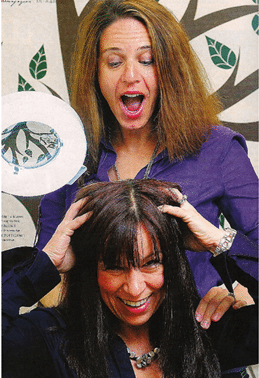 “Your child has head lice.” Not the happiest news from the school nurse. But just because school’s out doesn’t mean you’re out of the woods — especially with camp season kicking in. And, anyone who’s gone through it can attest, the task of getting rid of lice (on your children’s heads and in your home) can be nothing short of monumental.
“Your child has head lice.” Not the happiest news from the school nurse. But just because school’s out doesn’t mean you’re out of the woods — especially with camp season kicking in. And, anyone who’s gone through it can attest, the task of getting rid of lice (on your children’s heads and in your home) can be nothing short of monumental.
Head lice is actually more common than you think. The owners of Naughty Nits, a new local business whose sole focus is combating head lice, said that one in four kdis in the U.S. get it. But it’s not just children who end up scratching their heads. “Lice crawl, they don’t fly or jump. While the 2-to 12-year-old crowd is most affected, older teens who babysit, along with parents and other adults, often are too. We also treat tons of grandparents” said Marnie Murray, mother of four and co-owner of Naughty Nits with business partner Lisa Saul.
And contrary to popular belief, lice isn’t linked to poor hygiene.
“The stigma of head lice isn’t the same in Europe,” noted Saul, who was a registered nurse is Sheffield, England before she relocated here 10 years ago. “But in the U.S., there is a lot of inaccurate information about the cause. Lice are often mistakenly associated with being dirty, but that is totally untrue.”
Murray and Saul began their nit-picking business in 2010 out of their homes, and recently opened a treatment center featuring four private rooms on Wehrle Drive in Williamsville.
“Because parents are concerned about the emotional toll the experience takes, we’ve worked hard to make the center a happy, kid-friendly place with DVDs, lemonades and treats,” said Murray. The combing process is relaxing and painless, she added.
“We also continue to make house calls, traveling all over the area from Lewiston to Batavia and everywhere in between,” said Murray, who has a master’s degree in biology from Yale.
When one child in the family brings home lice, it can be disruptive to the entire family. Because children can miss up to three weeks of school with head lice, there can be significant economic impact on their parents.
For Debbie Farley, a Clarence mother of four daughters, an infestation of lice eight years ago could not have come at a a worse time. “My five-year-old brought it home, gave it to me; I was five months pregnant,” she recalled. “We were totally overwhelmed — my husband was picking through my hair and cutting out eggs. We used over-the-counter toxic treatments on the girls, followed by two hours per head to comb out the eggs.” Farley said she also did at least 20 loads of laundry that week and repeated the process every other night until her daughter was cleared by the school nurse to return to school.
Farley, who works as a dental hygienist, recently took a part-time job at Naughty Nits. “Lice can happen to anyone. We try to educate the client about the live cycle of lice and how to avoid reinfestations,” Farley said.
While home remedies ranging from mayonnaise to vinegar to over-the-counter treatments have been available for decades, the local lice ladies say those treatments don’t get down to the nitty gritty. “They might kill the live bugs, but the eggs remain alive. Females can lay seven to 10 eggs a day. We use an organic yeast enzyme product that unglues the nit from the hair shaft, and apply it piece by piece until the whole head is treated,” Saul explained. A short follow-up treatment a week later is recommended.
A Getzville mother (who wants to remain anonymous) of three said she was “freaked out and in a panic mode when one of her daughters was sent home from school because the nurse found lice in her hair. Ultimately all five members of the family were successfully treated in a home visit made by the lice ladies.
While their house calls have taken them from “15,000 square-foot mansions to shotgun shacks in outlying areas,” Saul and Murray say every lice outbreak has a common theme. “People are stressed out and embarrassed, often hysterical when they contact us. We tell them that it can happen to anyone, that we will pull up in an unmarked vehicle and that our service is confidential,” said Murray. “Our staff, made up of moms, is compassionate and understanding.”
Both women agree that the best part of their buggy business is the end result. “Our clients may be crying whey they call; when they leave they hug us and are so happy,” Saul said. “It’s an awesome, fulfilling feeling.”
Brenda Alesii is a freelance writer from Williamsville
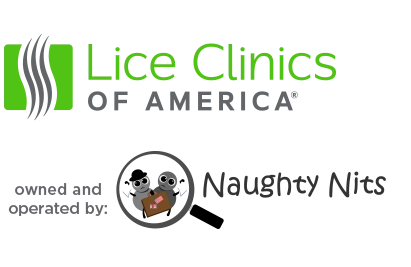
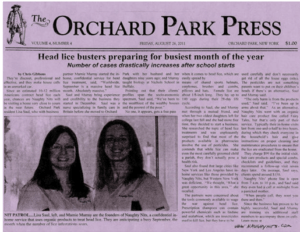 They’re discreet, professional and effective, and they make house calls in an unmarked car. Since an estimated 10-12 million Americans contract head lice each year, chances are Naughty Nits will be visiting a home very close to yours soon. Orchard Park resident Lisa Saul, who with business partner Marnie Murray started the in-home, confidential service for head lice treatment, said, “Worldwide, September is a massive head lice month. Absolutely massive.” Saul and Murray bring experience and credibility to the business they started in December.
They’re discreet, professional and effective, and they make house calls in an unmarked car. Since an estimated 10-12 million Americans contract head lice each year, chances are Naughty Nits will be visiting a home very close to yours soon. Orchard Park resident Lisa Saul, who with business partner Marnie Murray started the in-home, confidential service for head lice treatment, said, “Worldwide, September is a massive head lice month. Absolutely massive.” Saul and Murray bring experience and credibility to the business they started in December.

